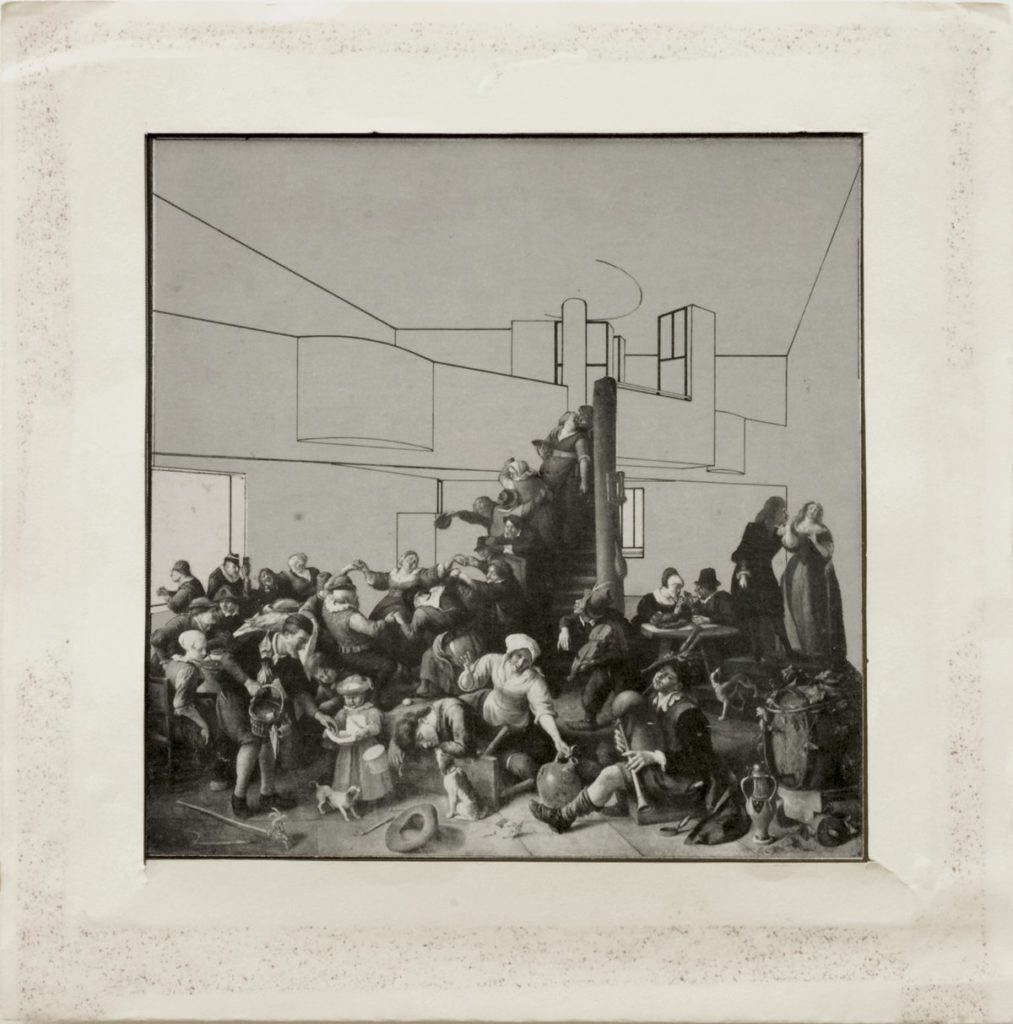Two Ideas of the House

This is probably my first collage with such a serious intent. It came about while I was working with Robin Evans at the Architectural Association. I made it during the second term of our collaboration running Unit 4 in the Diploma School. We had set out to determine a possible architecture for what we termed ‘large houses’, as an alternative to the existing practices at that time in mass housing. One of the critical corner-posts of the undertaking was an analysis and critique of Modernism, particularly with regard to housing. In this, from Bob’s earlier work on Bentham’s Panopticon, we supposed the ‘manufacture of virtue’ transferred from the design of prisons to the secret instinctive aims of public housing: the reform and control of the conduct of everyday life. The suppression of the Rookeries, seen in our eyes as places of less inhibited and legislated ways of living, and the first public housing being built on their ruins, as with the Arnold Circus housing built on the site of the destroyed Jago in Shoreditch at the end of the nineteenth century, was primary evidence for us of the working of inexorable respectability, slowly and continuously suppressing a richer expression of existence. This tendency we believed was reinforced with the emergence of Modernism, particularly with regard to the development of housing, a concept that rather peculiarly comes to replace the idea of the house.
One source of inspiration was seventeenth-century Dutch painting of domestic interiors, particularly those of the Leiden painter, Jan Steen. His paintings often depicted a complex household greater than a singular nuclear family. These pictures, and others from the same period, depict the house as a place of animation and conviviality, qualities that we were interested in encouraging in a new form of the house that our students were charged with developing through their project work.
The two images that combine to make the collage had between chosen by Bob and myself as contrasting illustrations for the cover of a publication of a project carried out in that first term, Autumn 1975. One was Le Corbusier’s drawing of the interior of the mass production Artisans’ Dwellings project, included in Vers Une Architecture (Editions Cres Paris, 1923). The other is the painting by Jan Steen of the Egg Dance of 1674, now in Aspley House, London. They were to indicate the differences between the two ideas of the house, one silent and austere and the other teeming with life. The book, Comparisons: Life in the Home was published by the Architectural Association in January 1976. The purpose of the project had been to break open the rigid stereotype of the house precisely tailored to the nuclear family, as proposed by the Parker Morris report, Homes for Today and Tomorrow (London HMSO, 1961), and its offspring, Space in the Home (HMSO, 1963), by comparing variations of dwellings from different times and cultures.
Once I had spotted the spiral stair at the centre of each picture, the rest was easy.
